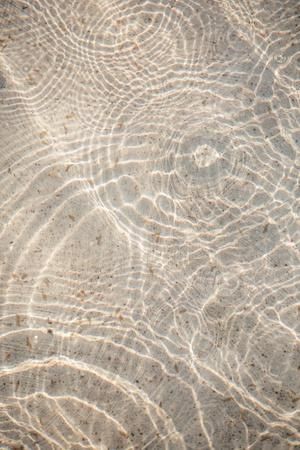Where Art, Body, and Language Meet to Make Sense of What We Feel
What if emotional regulation wasn’t about becoming calmer, but about becoming more connected? In Dr. Saria Gebeily’s practice, regulation isn’t a trick of the mind or a detour around discomfort — it’s a full-bodied return to meaning. Her approach brings together creative therapy, body-based movement, interoceptive awareness, talk therapy, and art as a living language — crafting a path toward healing that is as expressive as it is structured.
At the heart of her work lies a belief that emotions are not obstacles, but information in motion — sensations, images, textures, and stories waiting to be witnessed. For many, especially those who’ve grown up in cultures where silence was survival, emotions weren’t something you talked about, moved through, or created with — they were something you braced against. Dr. Saria gently disrupts that inheritance. Through guided movement, symbolic art-making, grounded dialogue, and somatic witnessing, she helps individuals engage emotion not as a performance or pathology, but as a layered tapestry of memory, body, and imagination.
Her clients don’t just talk their way through healing — they draw it, move it, touch it, sculpt it, voice it. Emotions are given form, color, breath, and motion. In doing so, they begin to make sense — not just in the mind, but across the entire being.
“Saria always says: Emotions — our tapestry. They are not fragments to be managed, but threads we are invited to weave into meaning.”
This blog explores how Dr. Saria’s unique method of emotional regulation bridges the verbal with the visceral, the cognitive with the creative — and offers a way back to inner coherence that speaks to the whole self.
Emotional regulation, in Dr. Saria’s framework, is not a one-size-fits-all protocol — it’s a multimodal process that honors how different people access safety and expression. For some, regulation begins with movement: a small sway of the spine, a shift in breath, a trembling hand allowed to finish its sentence. For others, it starts through image — a color or shape that surfaces in art therapy long before words are ready. In many cases, it emerges through the body’s subtle language of interoception — the inner signals of heartbeat, breath, heat, and texture that carry emotional meaning beneath conscious awareness. Rather than isolating these practices, Dr. Saria invites them to speak to each other: a drawing might inform a memory; a breath might guide a conversation; a bodily sensation might anchor a spiraling emotion.
This layered approach is especially vital for people navigating trauma, cultural silence, or nervous system dysregulation. Traditional talk therapy can sometimes bypass the body’s role in holding emotion, especially when words are not yet accessible or safe. Likewise, purely somatic methods may miss the need for narrative integration. By weaving talk therapy with movement, expressive arts, and body awareness, Dr. Saria creates a loop of co-regulation between mind, body, and symbol. In sessions, a client might begin by exploring a stuck emotion through gesture, then move into drawing it, and finally speak it into form — not for catharsis, but for coherence.
Her method is neither linear nor prescriptive. It’s deeply intuitive, clinically informed, and culturally aware — offering a dynamic and reparative space where emotions are not only felt but given shape, rhythm, and voice. This is what allows emotional regulation to move from theory to experience: not a checklist to perform, but a lived, creative process that restores internal dialogue where it was once cut off.


One of the most common questions Dr. Saria encounters is: “But how does this actually regulate me?” It’s a fair question in a world where regulation is often associated with breathing apps, posture corrections, or cognitive scripts. The difference here lies in depth, not difficulty. Regulation, in Dr. Saria’s model, doesn’t aim to mute or manage emotions — it aims to re-pattern the nervous system’s response to them. When a person uses movement to complete an emotional impulse, or shapes an overwhelming feeling into color and form, they are not distracting themselves — they are actively negotiating safety through the language their body understands best.
This is particularly crucial for people whose emotional systems have been shaped by trauma, war, displacement, or long-standing familial roles. For them, regulation cannot always begin in the head — it often begins in the body, or even in metaphor. Some may need to draw their anger before naming it, or hum their grief before touching it with words. Others might discover, through simple interoceptive practices, that their “anxiety” is not panic at all, but an overused alert system waiting for a new rhythm. These revelations may not come in a single session, but over time, through a layered dialogue between sensation, image, movement, and meaning.
What this approach ultimately offers is not a quick fix, but a flexible architecture for emotional life — one that honors complexity while cultivating internal safety. And that safety, as Dr. Saria reminds us, doesn’t always look calm. Sometimes it looks like motion, rhythm, expression, or even joyful noise — the opposite of shutdown. Regulation here becomes less about compliance and more about creative capacity: the ability to meet life’s emotional demands with tools that feel personal, embodied, and alive.
Weaving Emotion into Expression
Emotional regulation, as Dr. Saria Gebeily teaches, is not a rigid protocol or a universal destination — it’s a living, evolving relationship with the self. By integrating movement, interoception, creative expression, and therapeutic dialogue, her framework invites each person to regulate not by overriding emotion, but by honoring it as a messenger. Whether through drawing what the body feels, moving with what words can’t reach, or voicing what silence has held for too long, this approach reminds us that healing is never one-dimensional. It is textured, rhythmic, and deeply human.
As we walk this path together, it’s important to remember: emotional regulation is not a solo act. It’s a bridge — built from the threads of our stories, our bodies, and our shared humanity. Dr. Saria’s message is clear: you are not alone in this process. Your emotions are not burdens to bear in silence but threads in a tapestry we weave collectively.
You are not broken. You are not too much. You are already speaking — even in your silence. And I’m listening.
— With an open heart,
Dr. Saria Gebeily


Leave a Reply